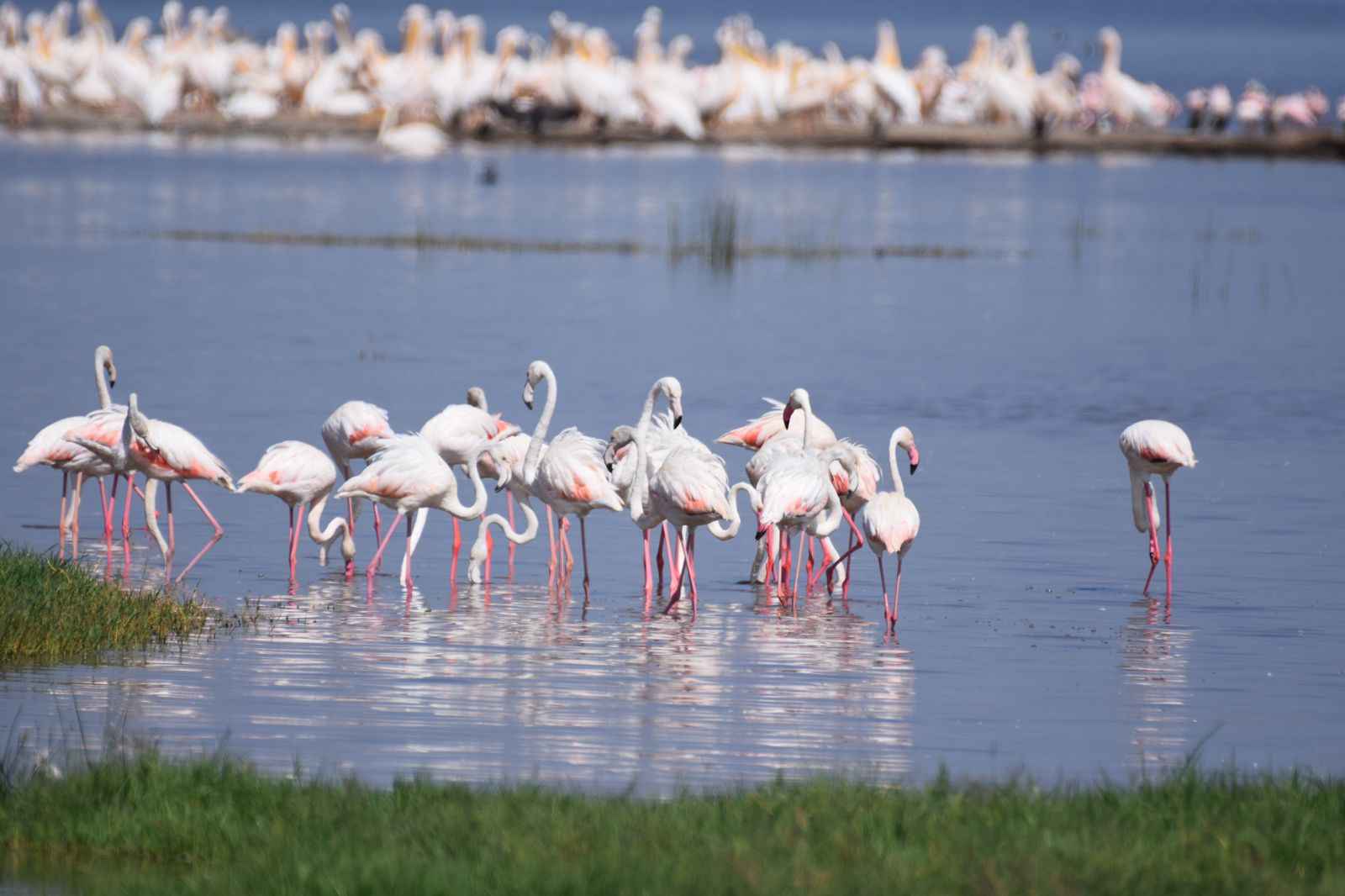FLAMINGOS IN LAKE NAKURU

A Pink Paradise: Witnessing the Majesty of Flamingos at Lake Nakuru
From the bustling heart of Nairobi, a journey to Lake Nakuru National Park is a vibrant escape into a world painted in hues of pink.
Approximately 6 hours drive from Nairobi, the park unfolds like a postcard come to life. Rolling grasslands dotted with acacia trees eventually give way to the shimmering expanse of Lake Nakuru. And then you see a breathtaking carpet of pink stretching as far as the eye can see.
Lake Nakuru's alkaline waters provide the perfect feast for these elegant birds. Rich in spirulina, a type of blue-green algae, the lake offers an abundant food source. This, coupled with the relatively undisturbed environment within the national park, creates an ideal habitat for both Greater and Lesser Flamingos.
The sheer number of flamingos is truly astounding. At times, the lake seems to be more pink than blue, with hundreds of thousands, sometimes even millions, of these wading birds congregating here. It's a symphony of soft honking sounds and the gentle rustling of feathers as they filter-feed with their unique downward-curving beaks.
While their stunning pink plumage that is derived from the beta-carotene in their diet is the first thing that captures your attention, observing flamingos reveals fascinating behaviors. You might witness them:
* Wading gracefully: Their long, slender legs carrying them through the shallow waters.
* Synchronized feeding: Often dipping their heads in unison, creating a mesmerizing visual rhythm.
* Social interactions: Observing their subtle movements and calls, hinting at the complex social dynamics within the flock.
* Taking flight: A sudden rush of pink as a section of the flock takes to the air, their black-tipped wings contrasting beautifully against their rosy bodies.
The best time to visit is during the dry seasons. Although the flamingos are present year-round, the dry seasons (June to October and January to February) often offer better visibility.
